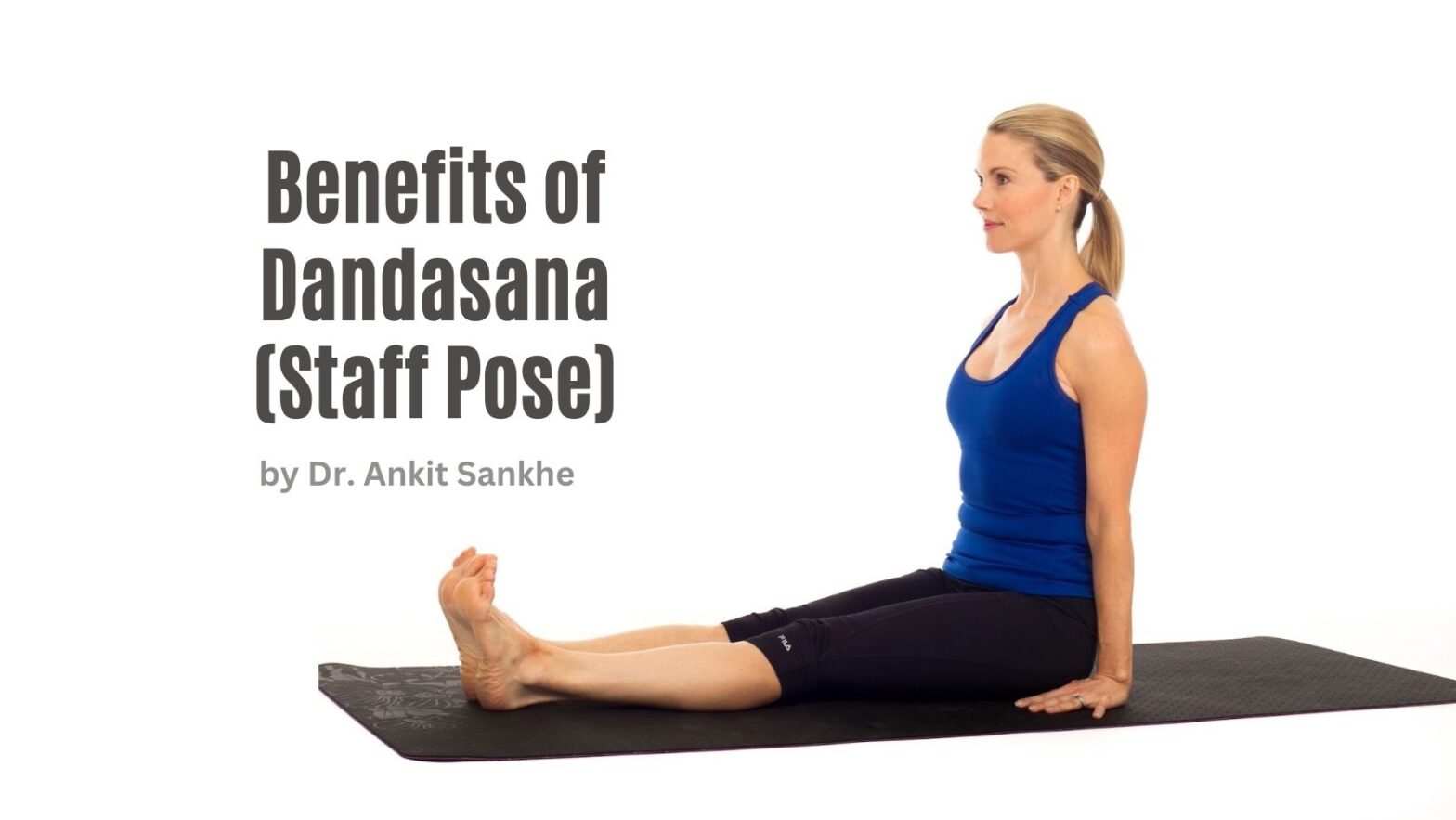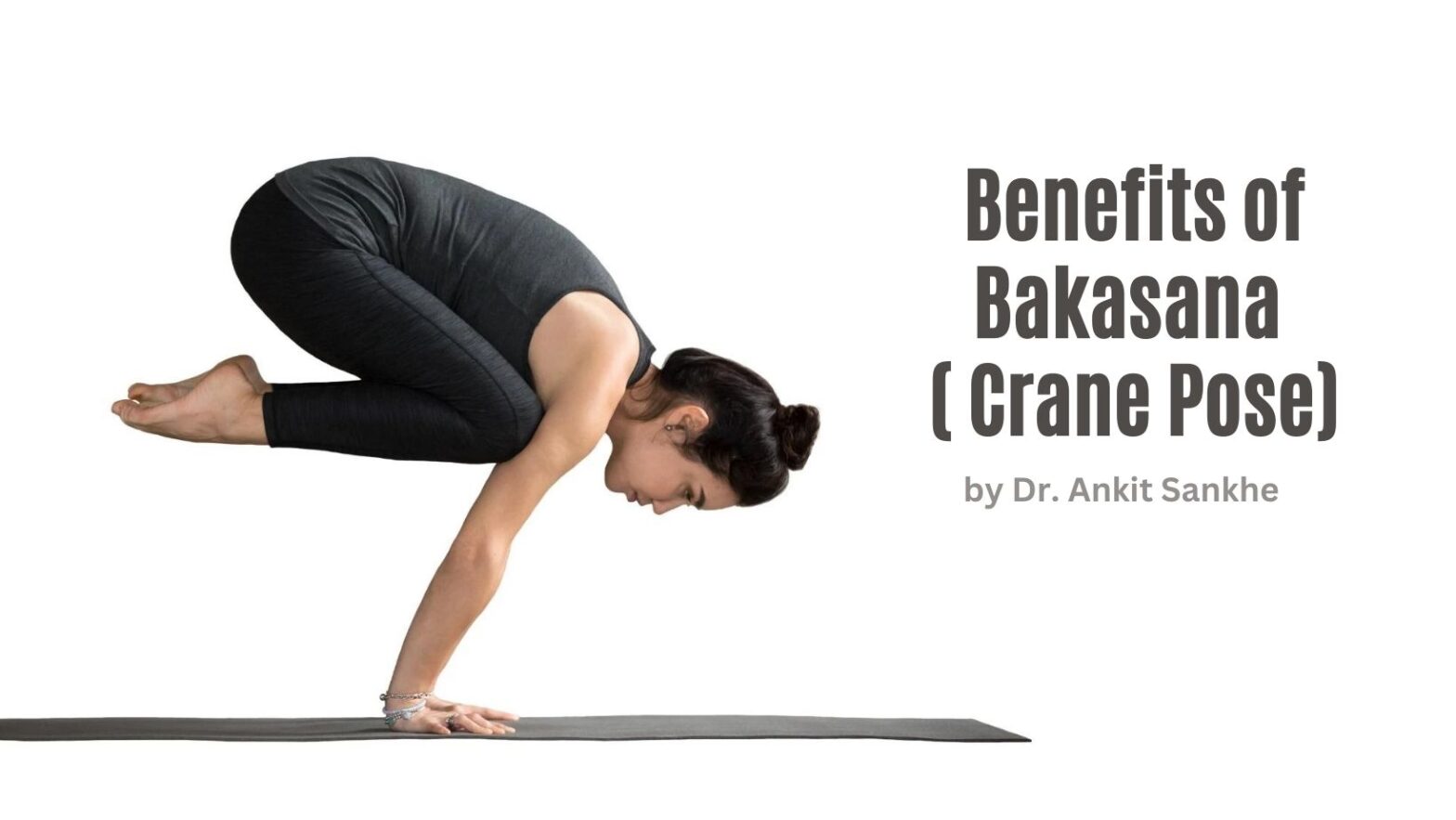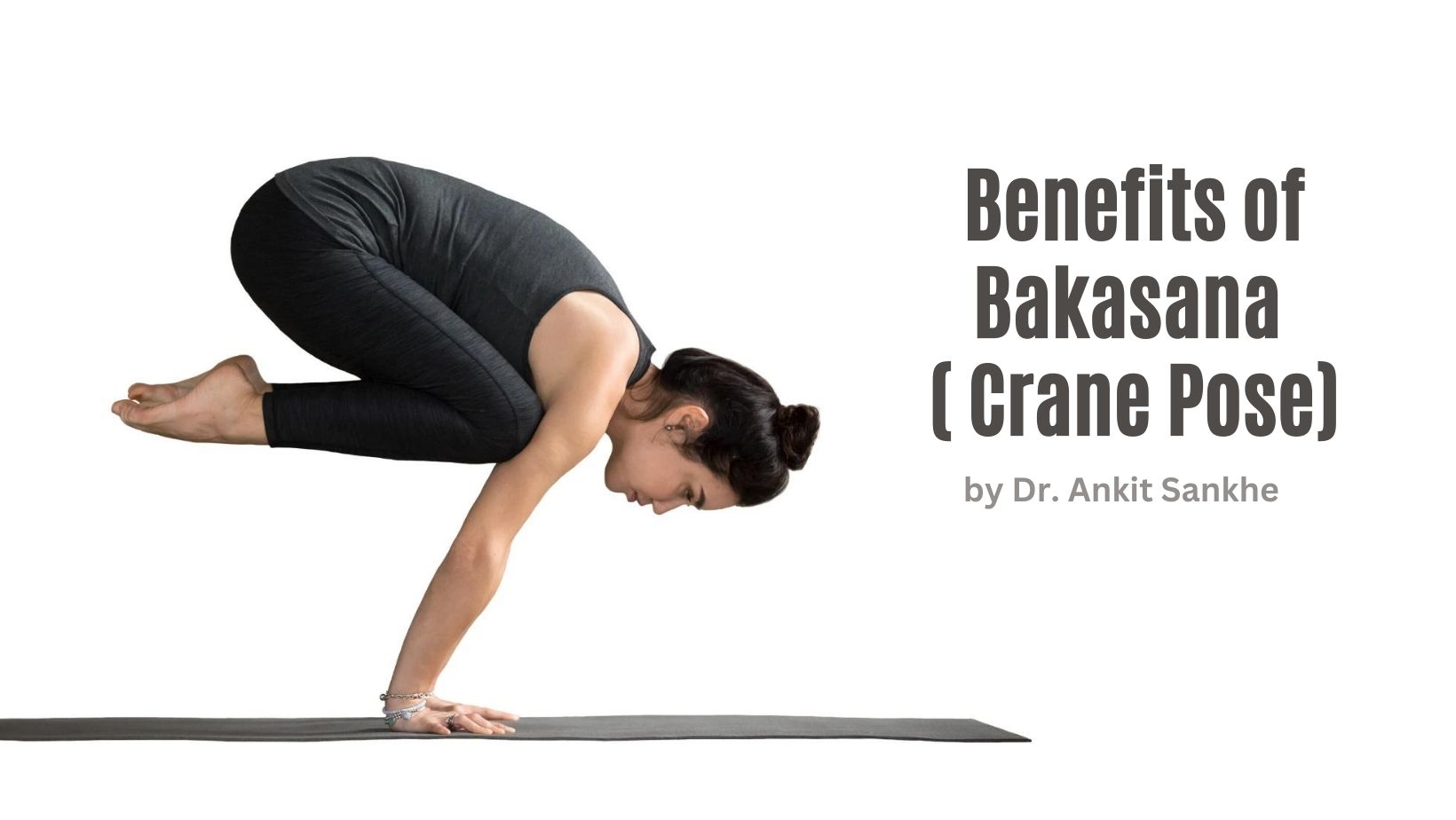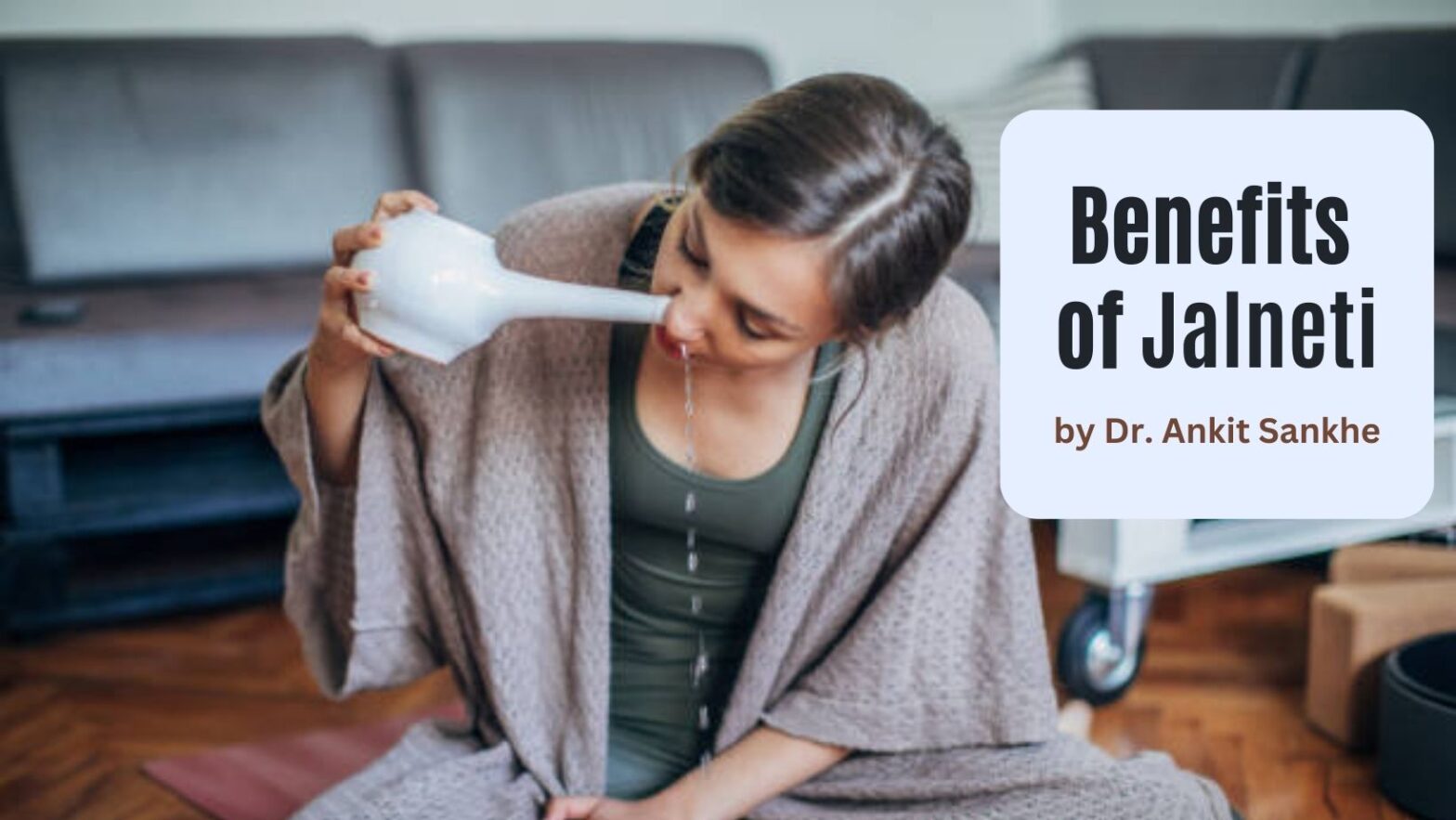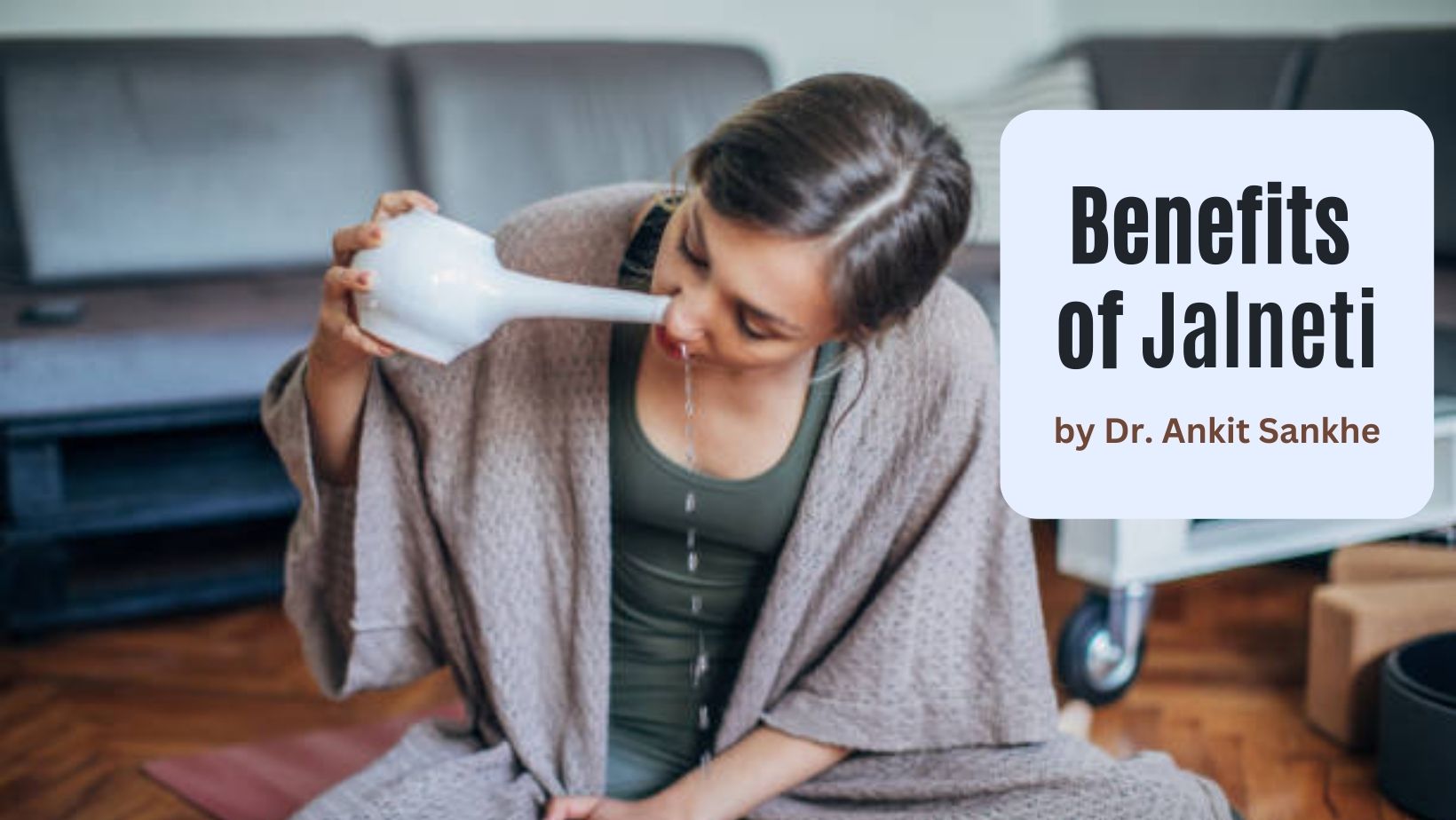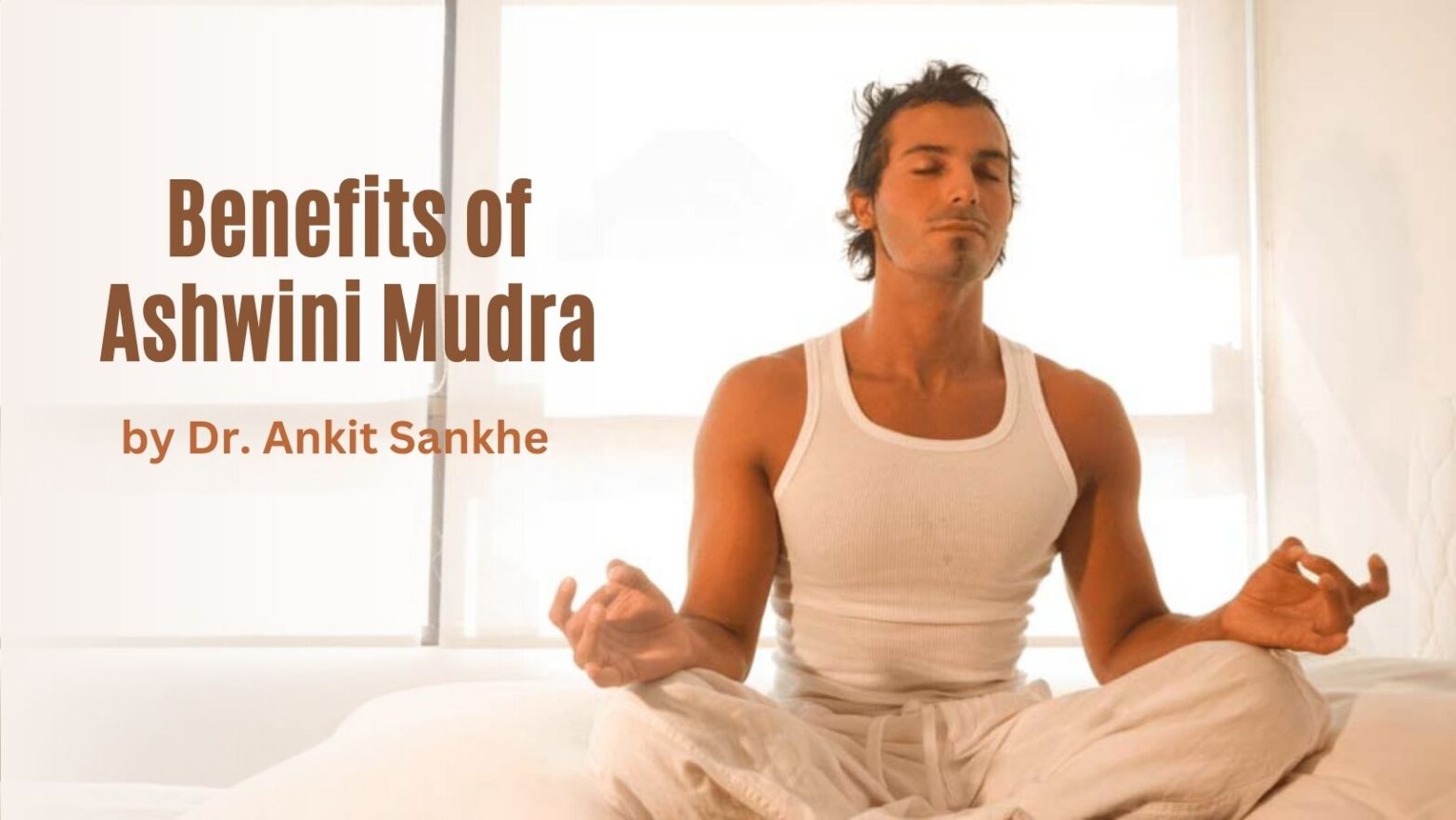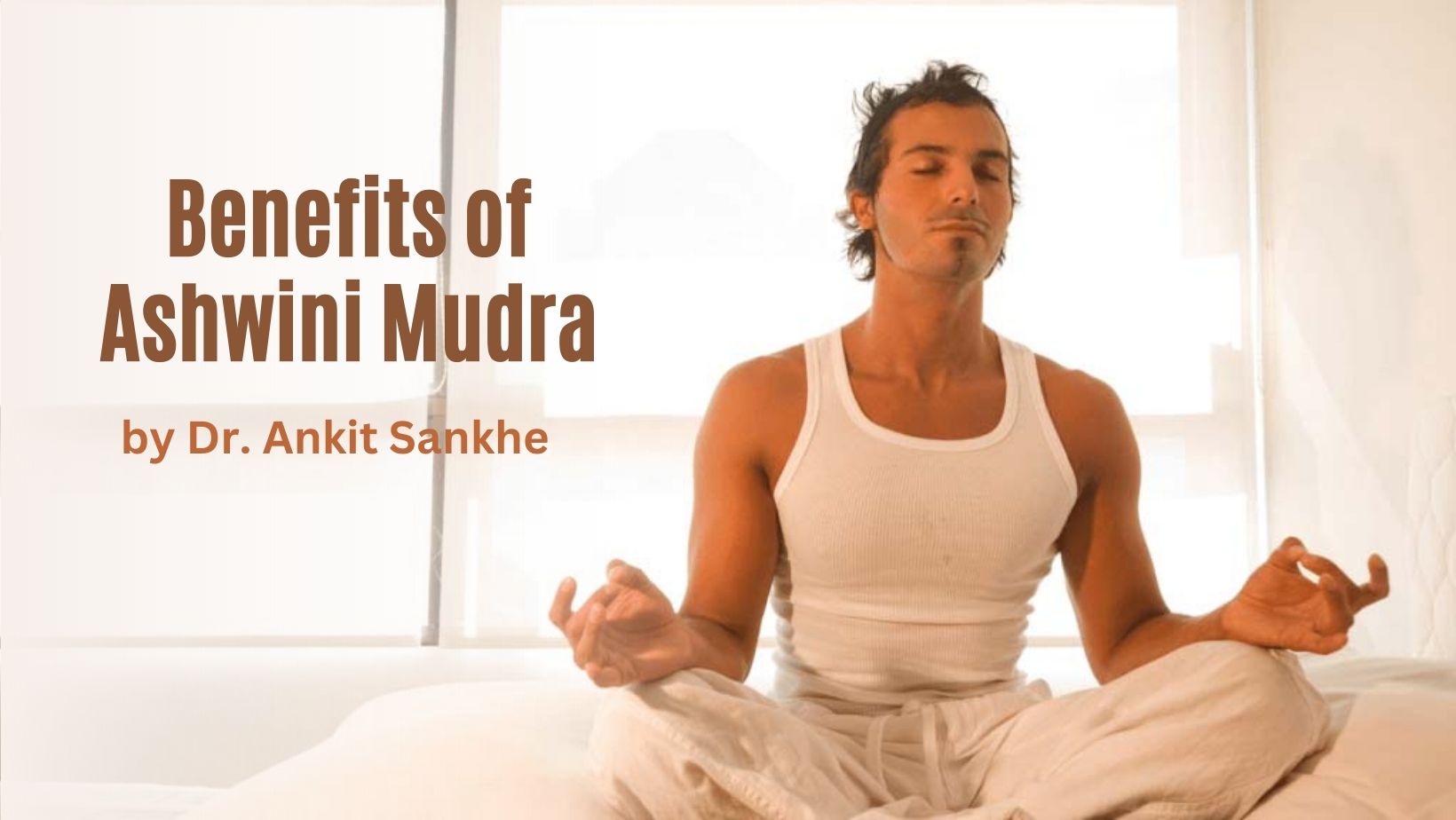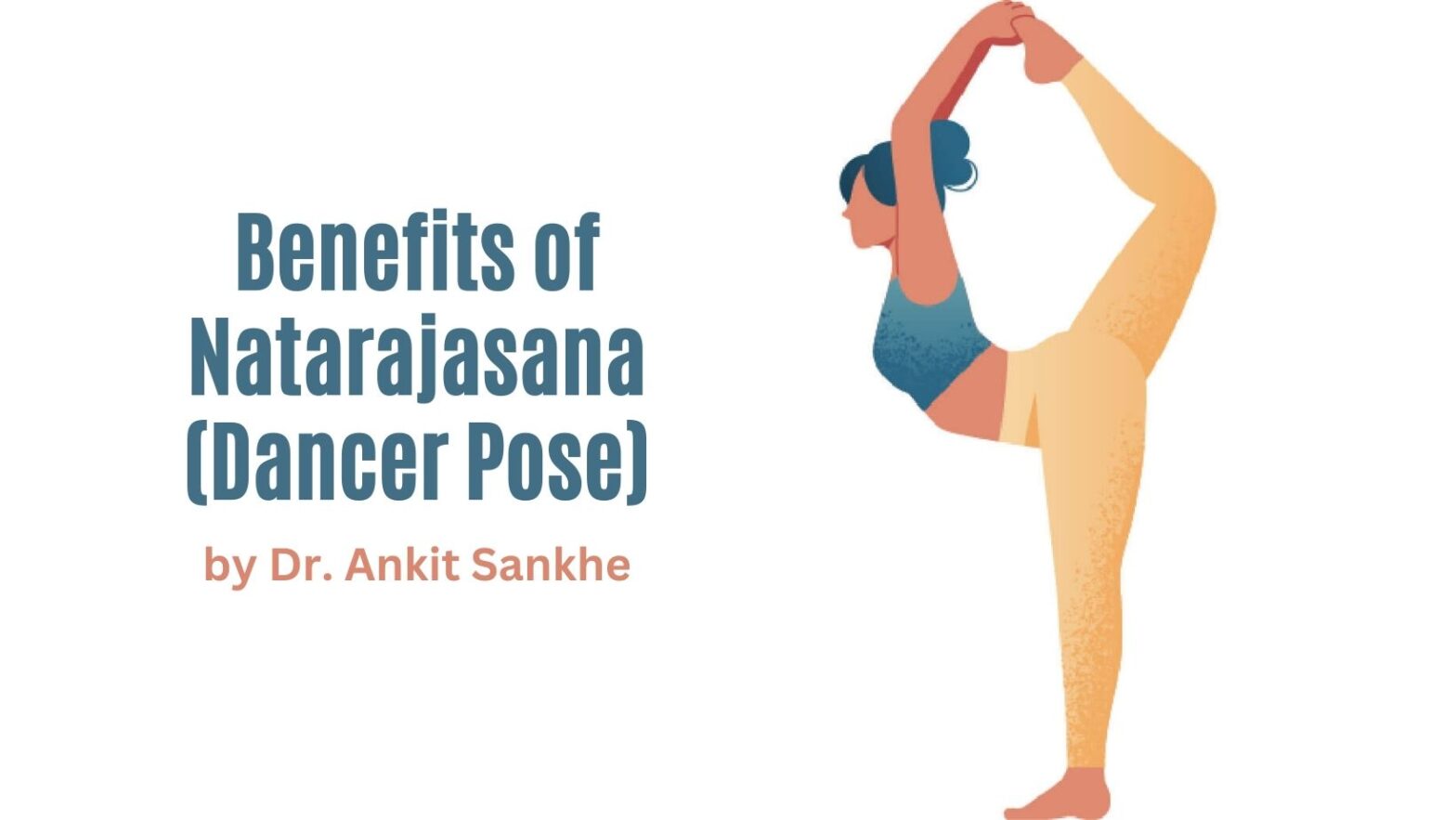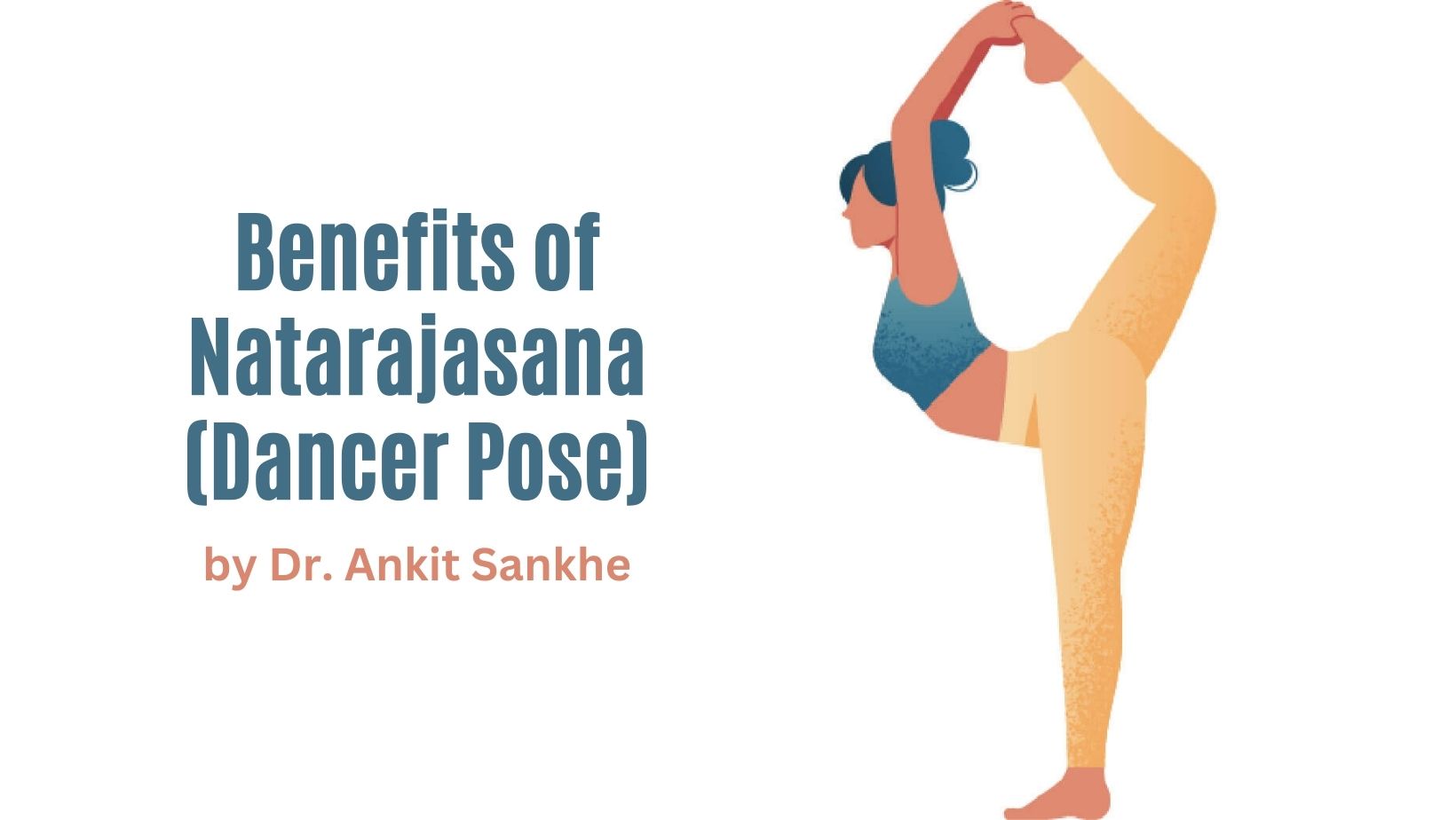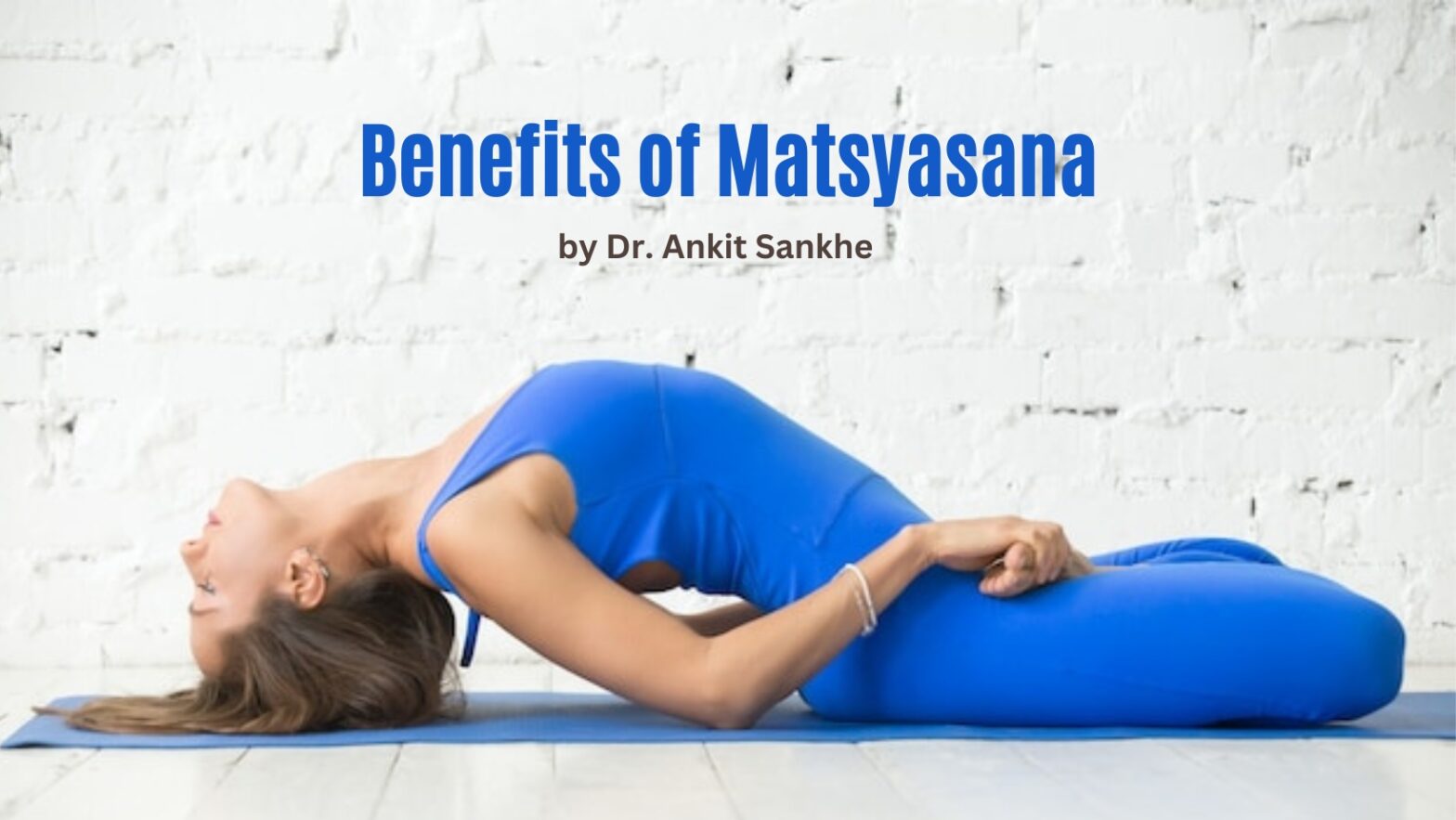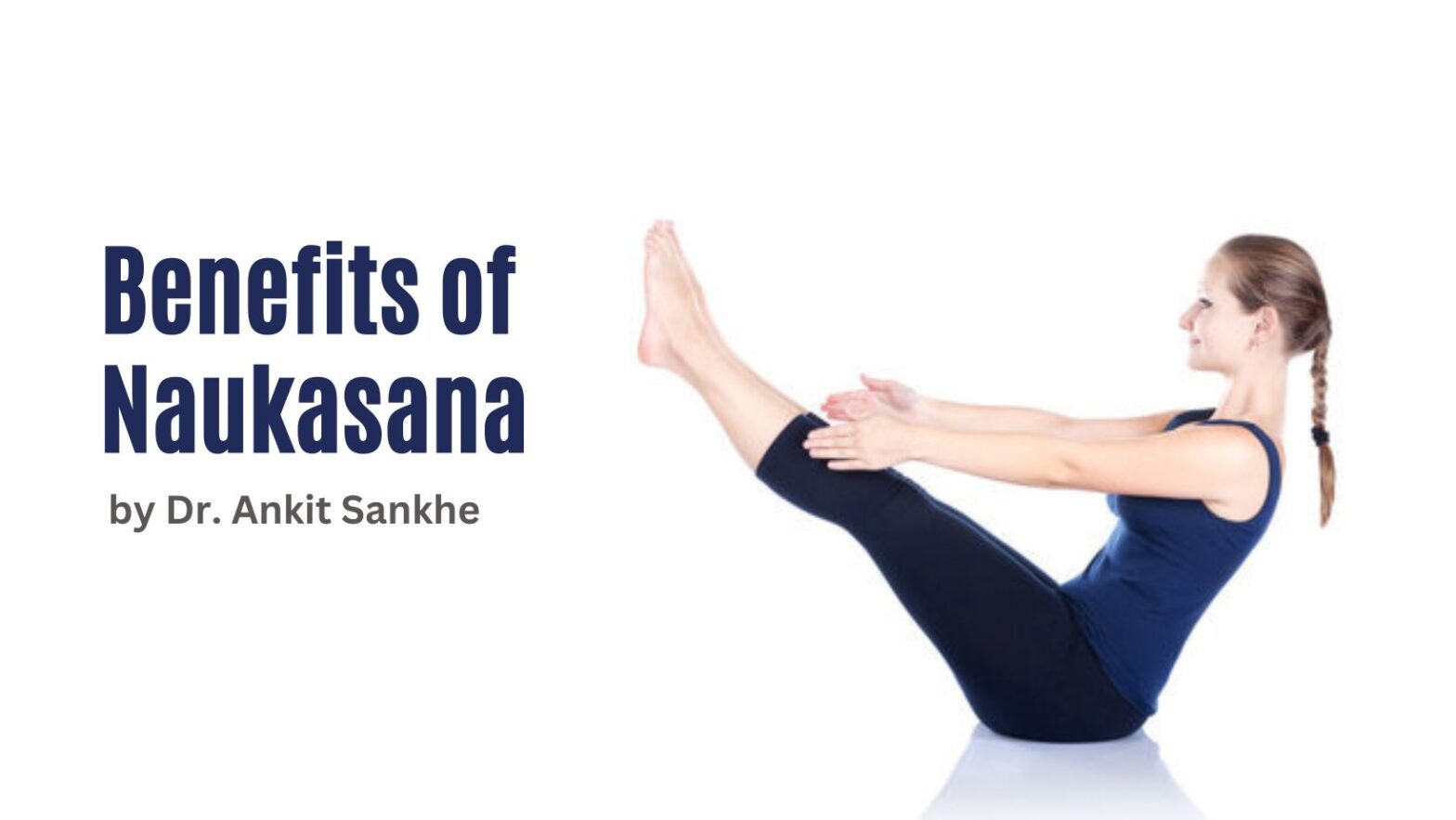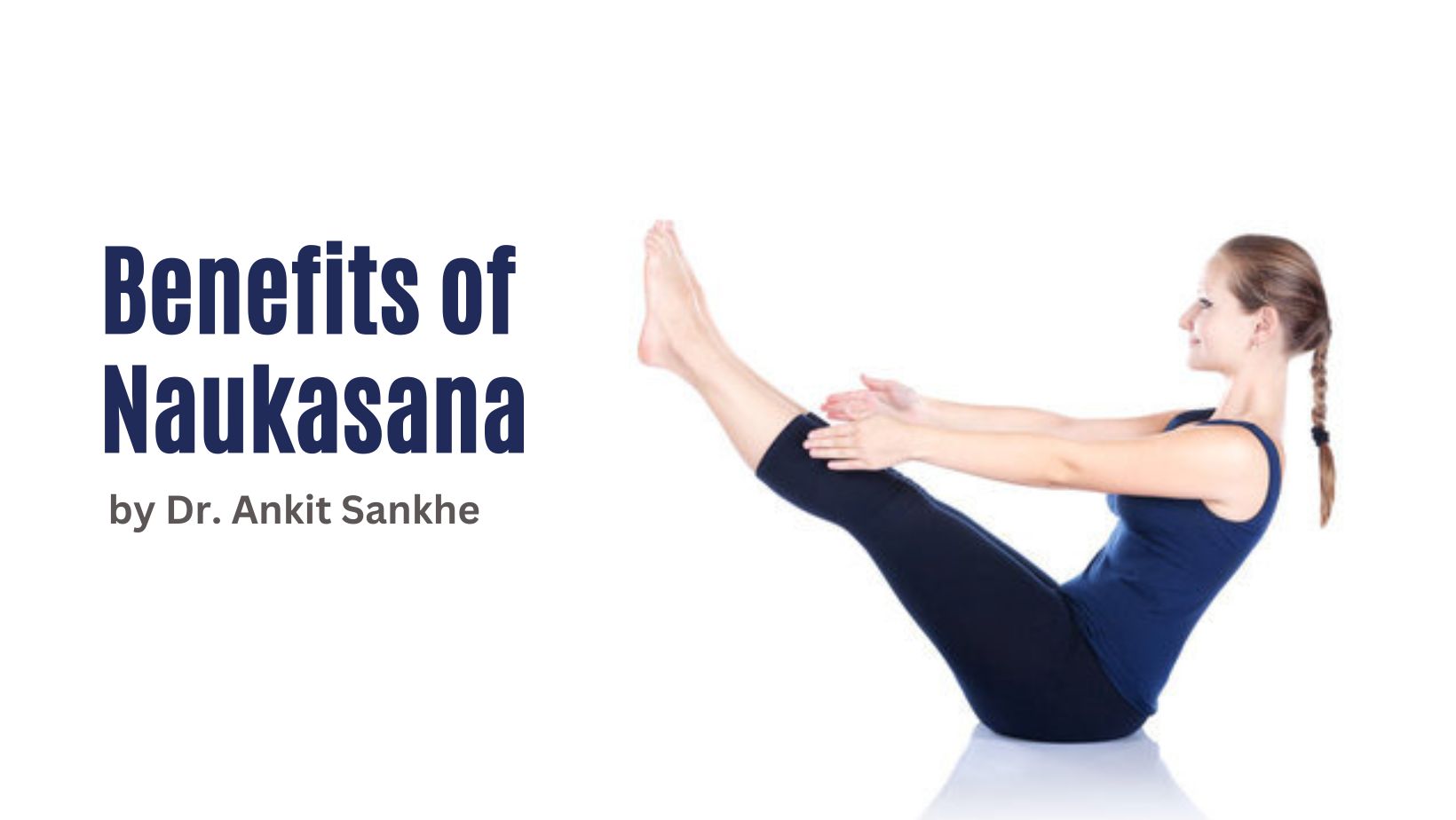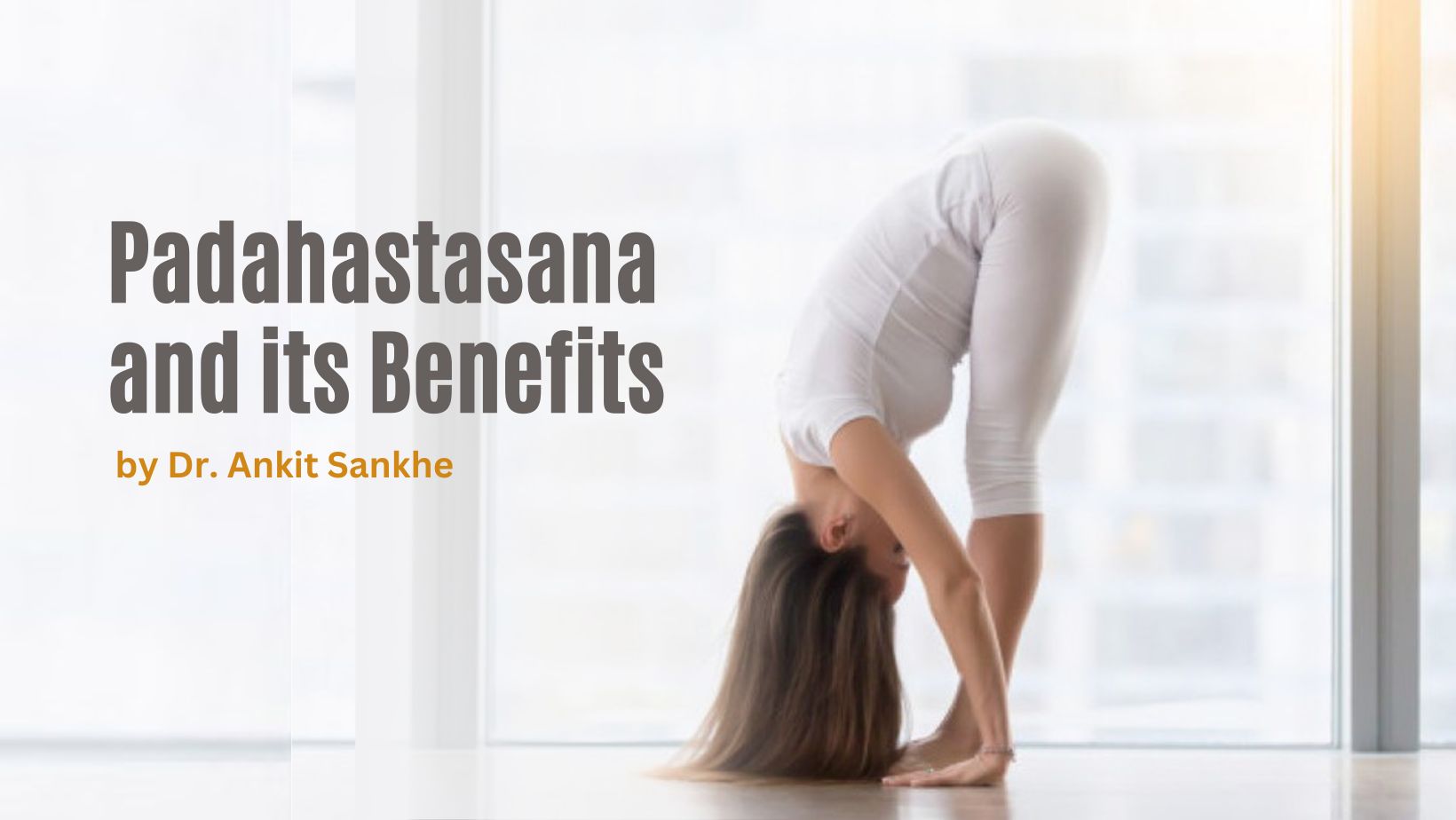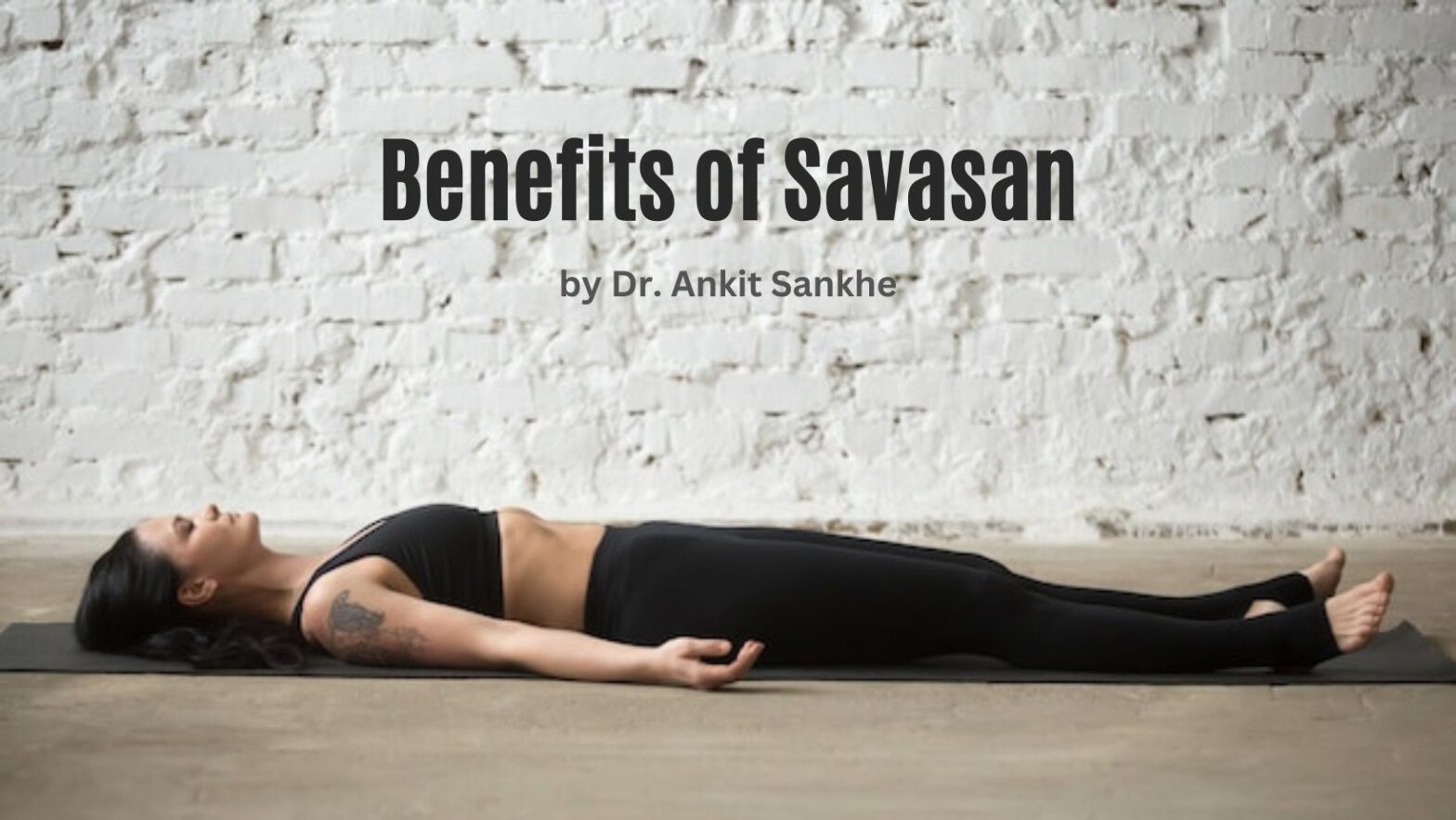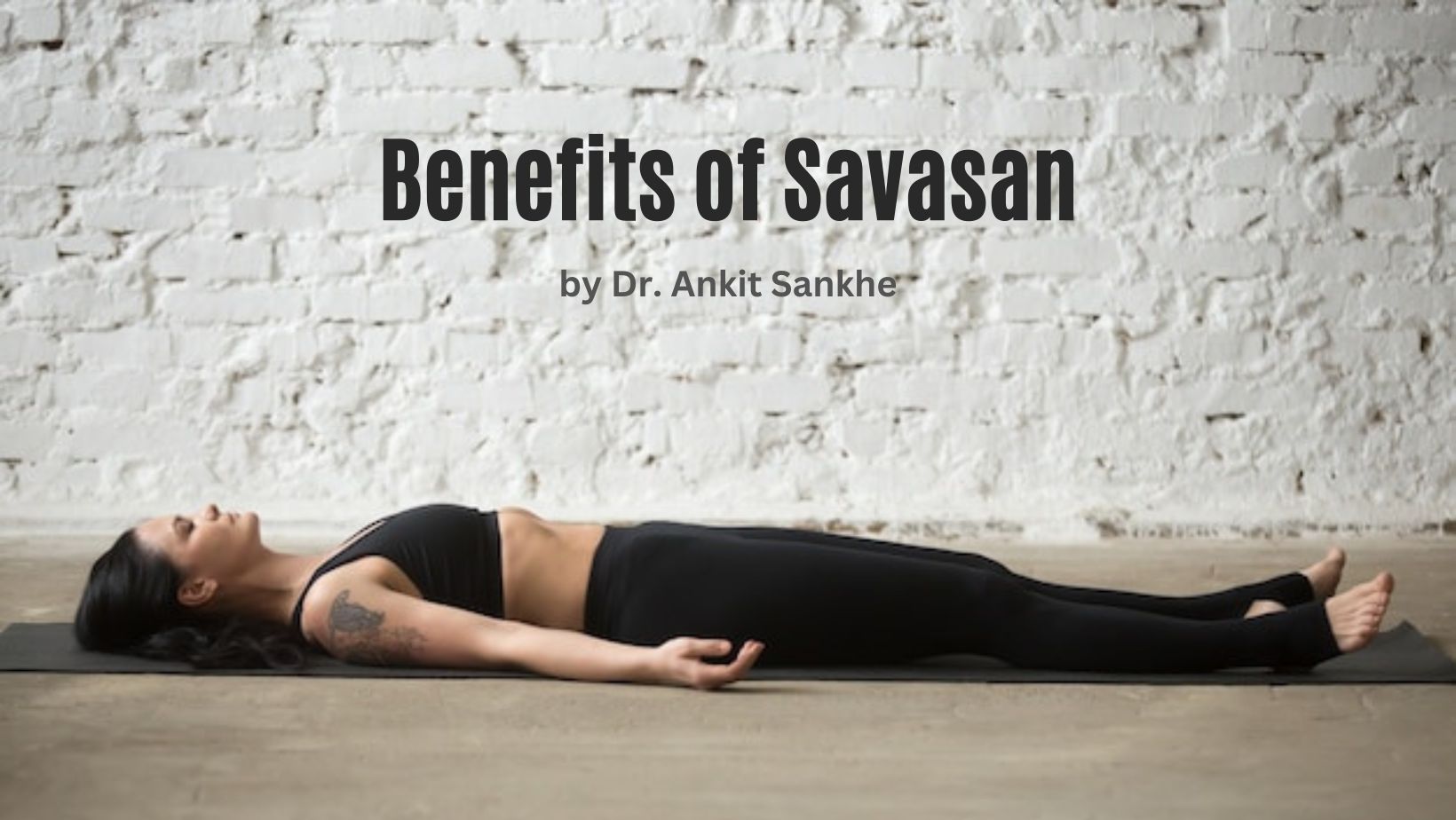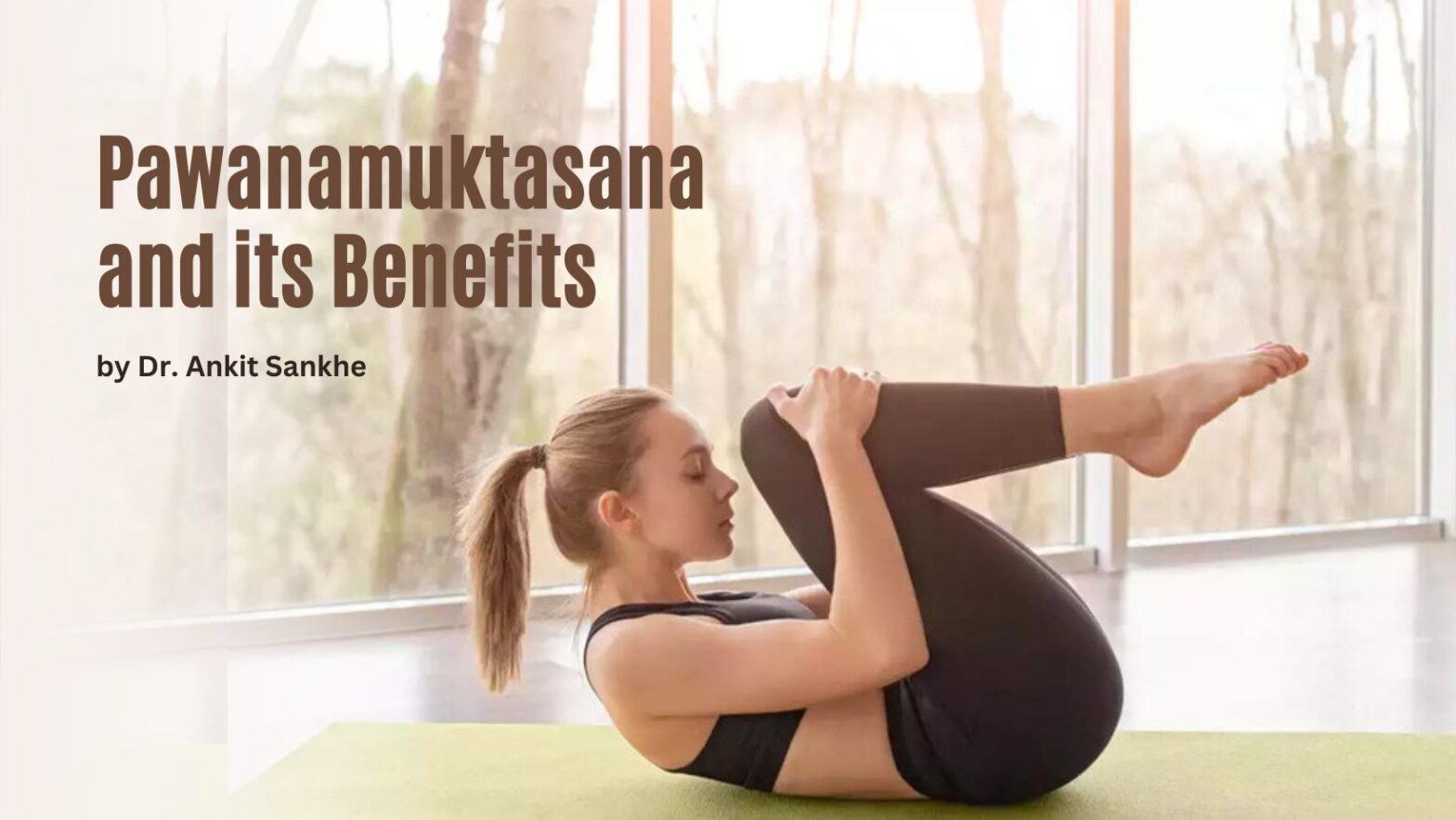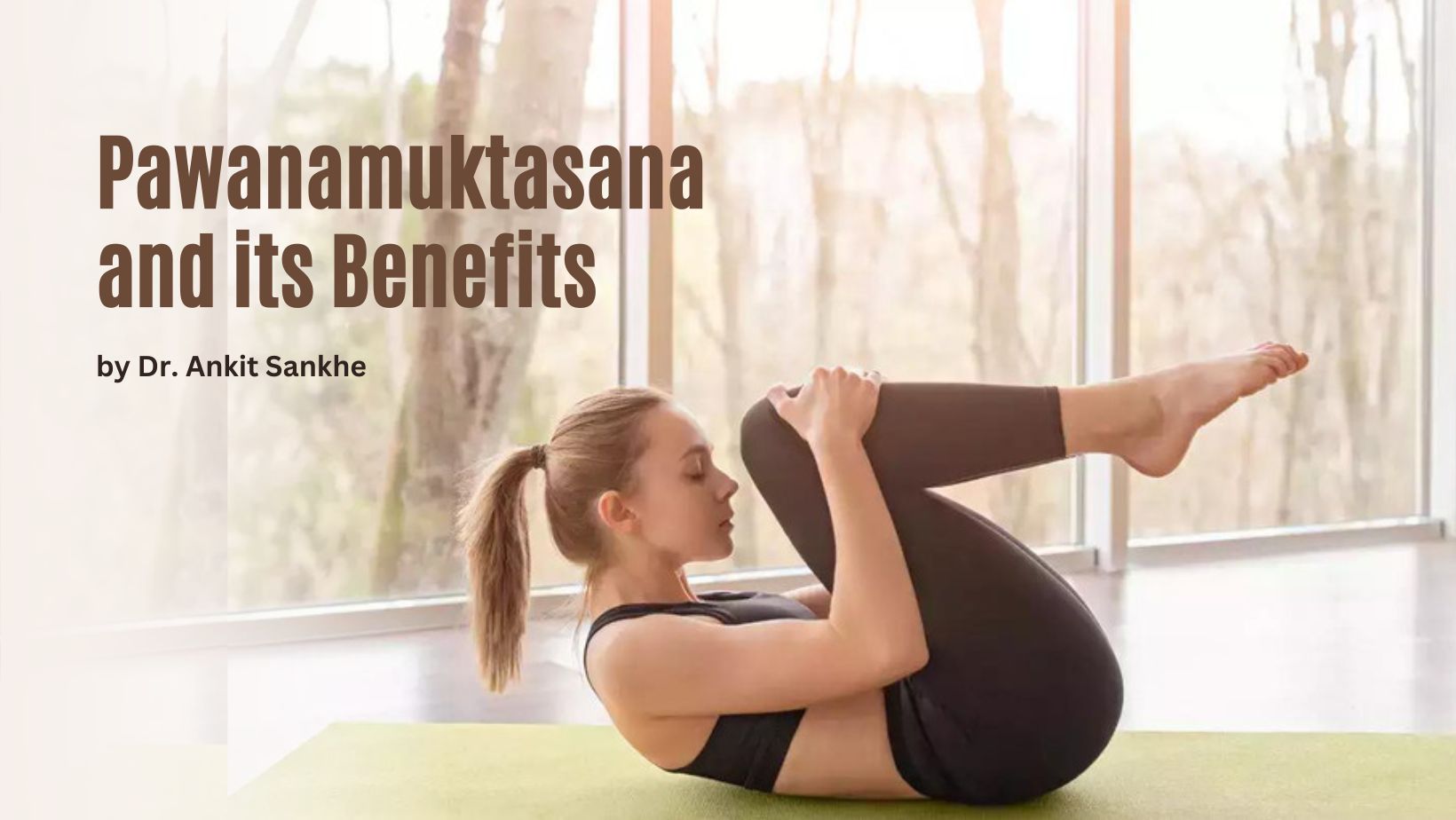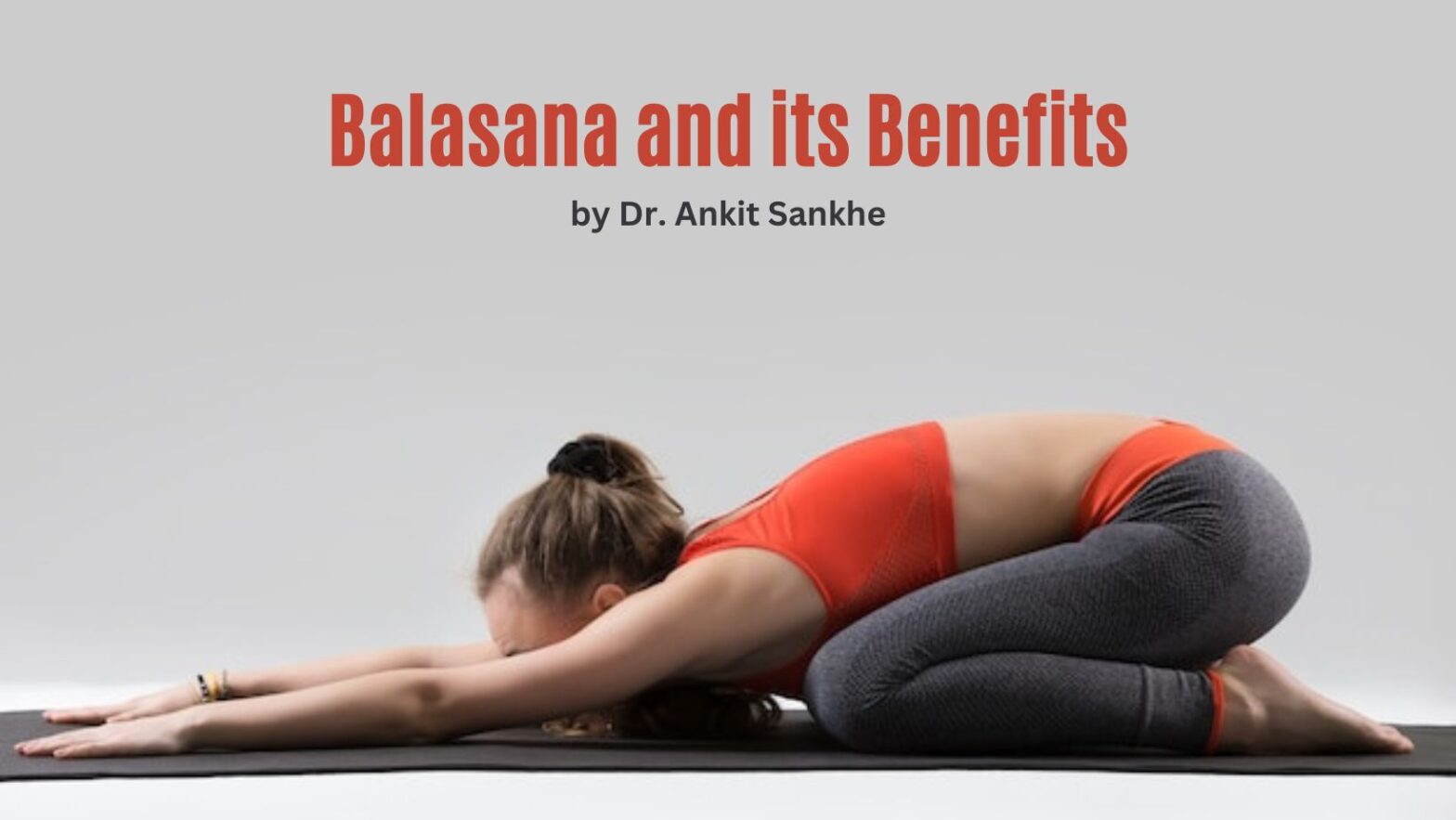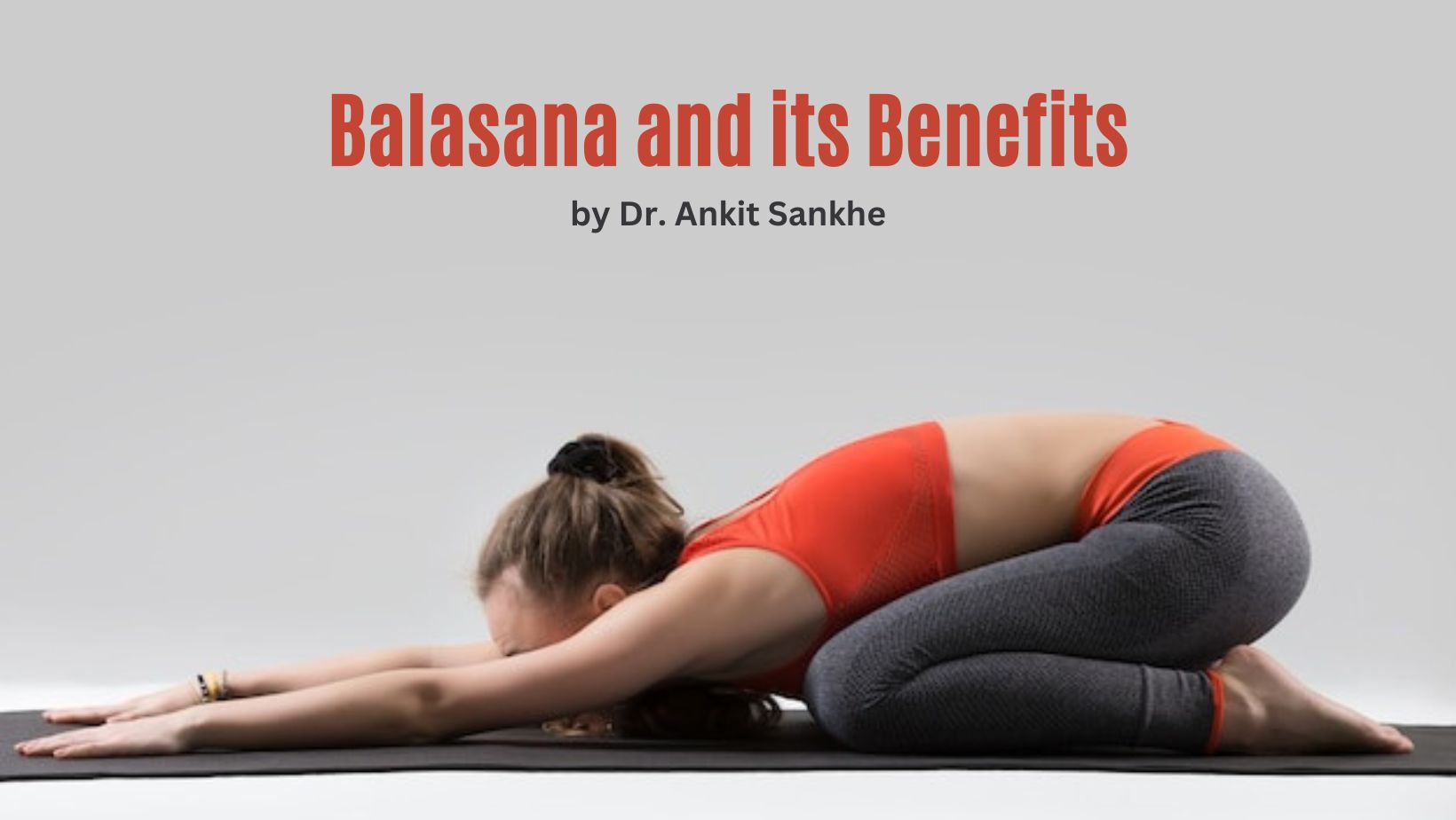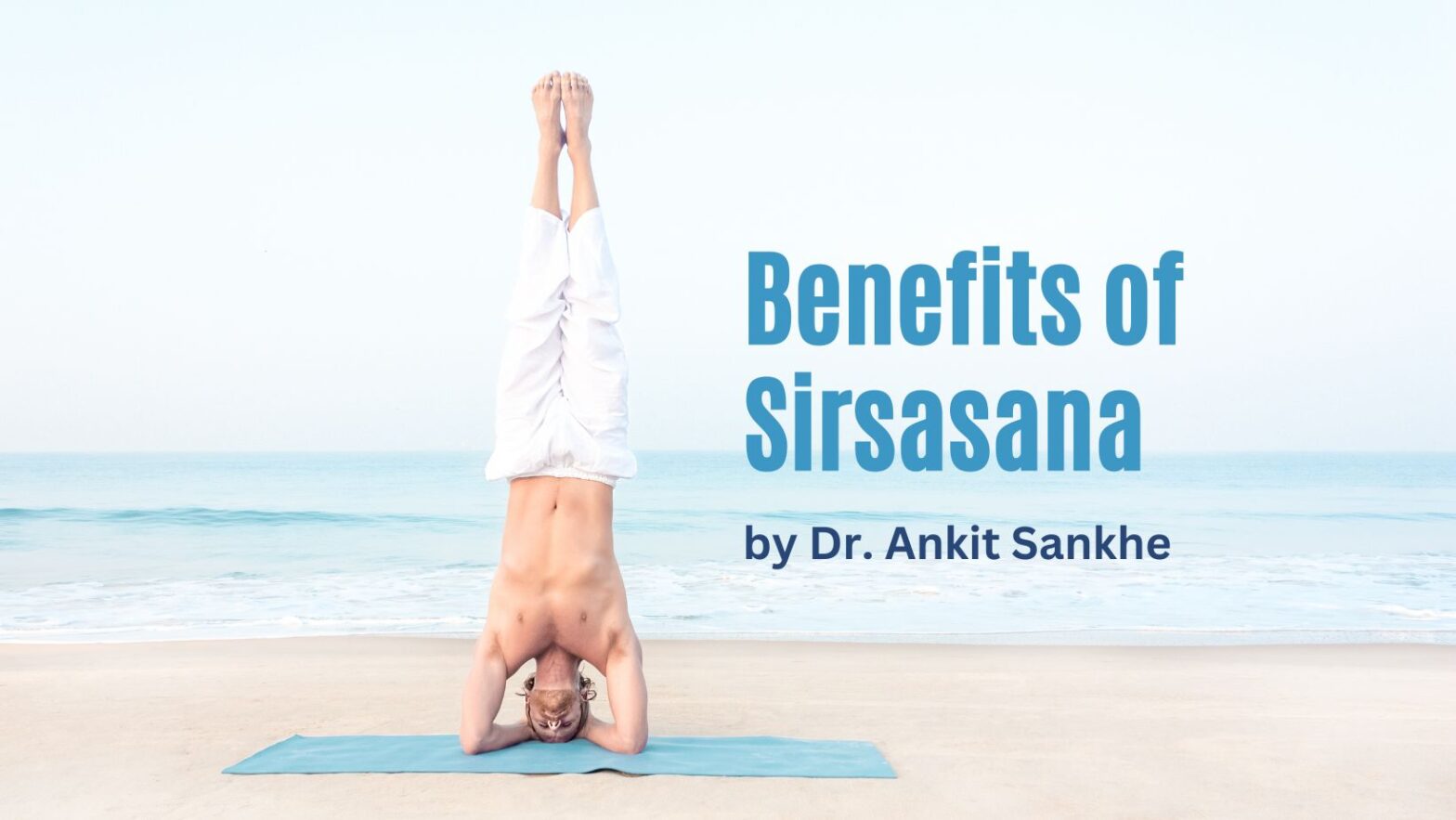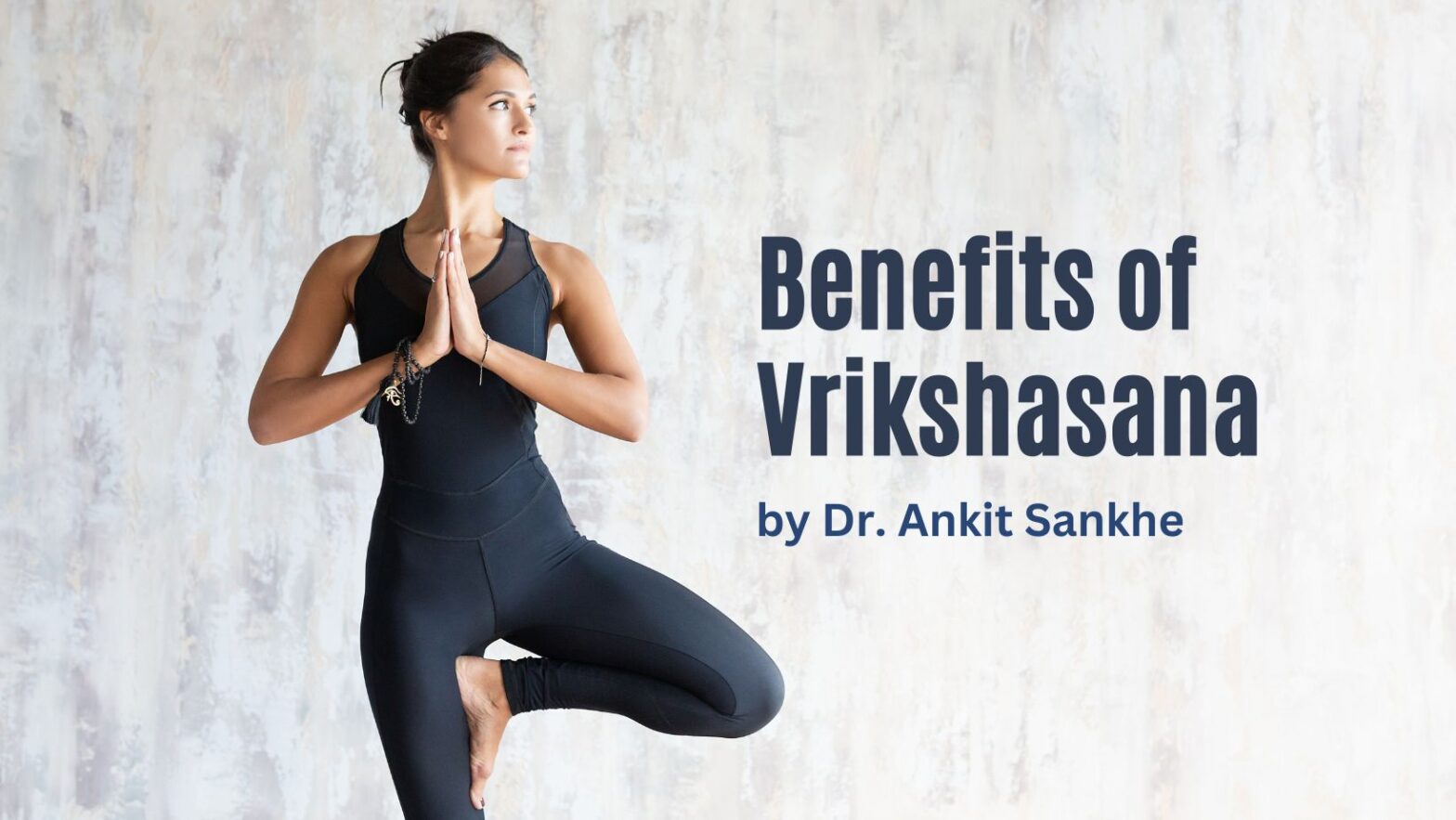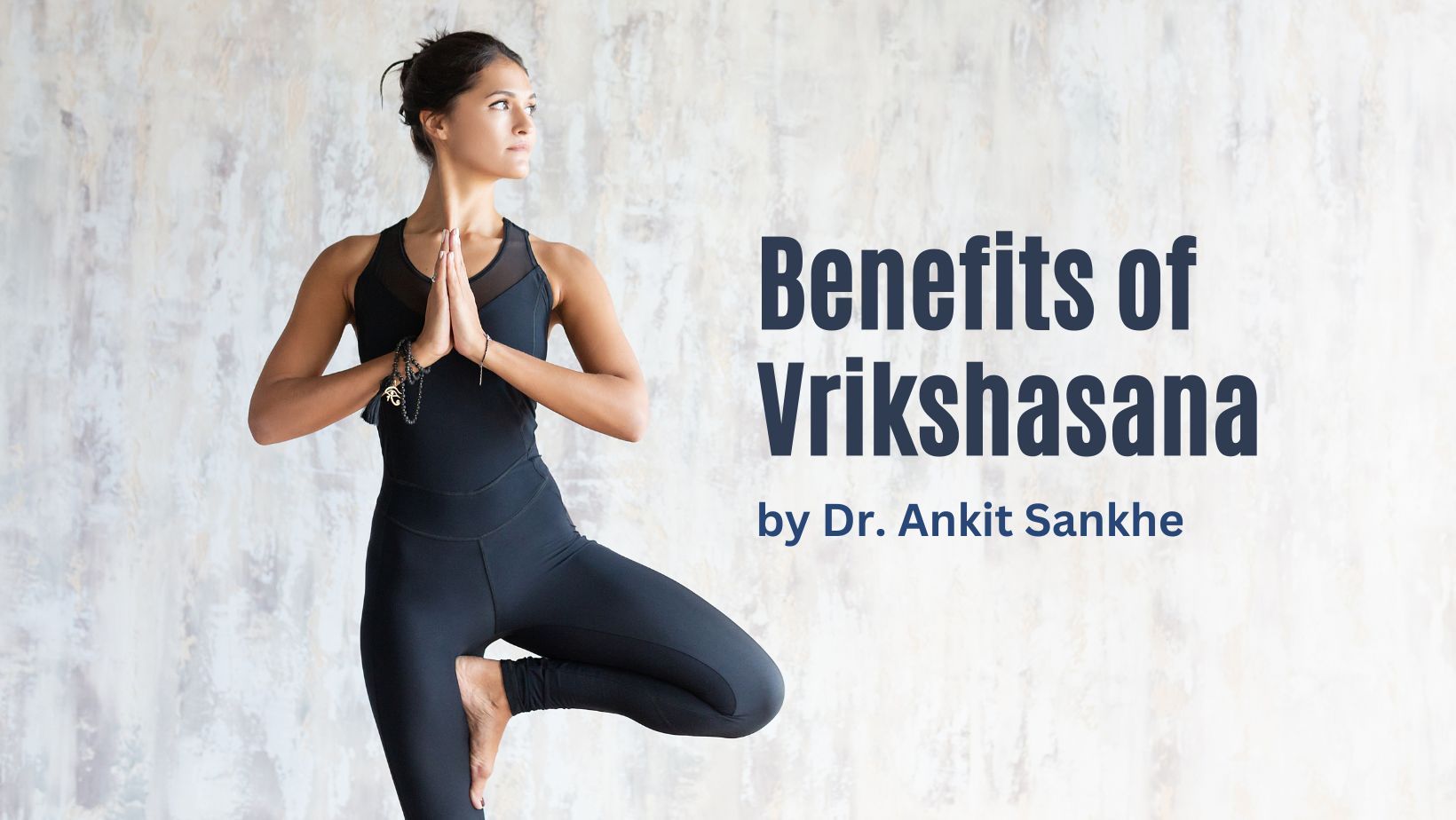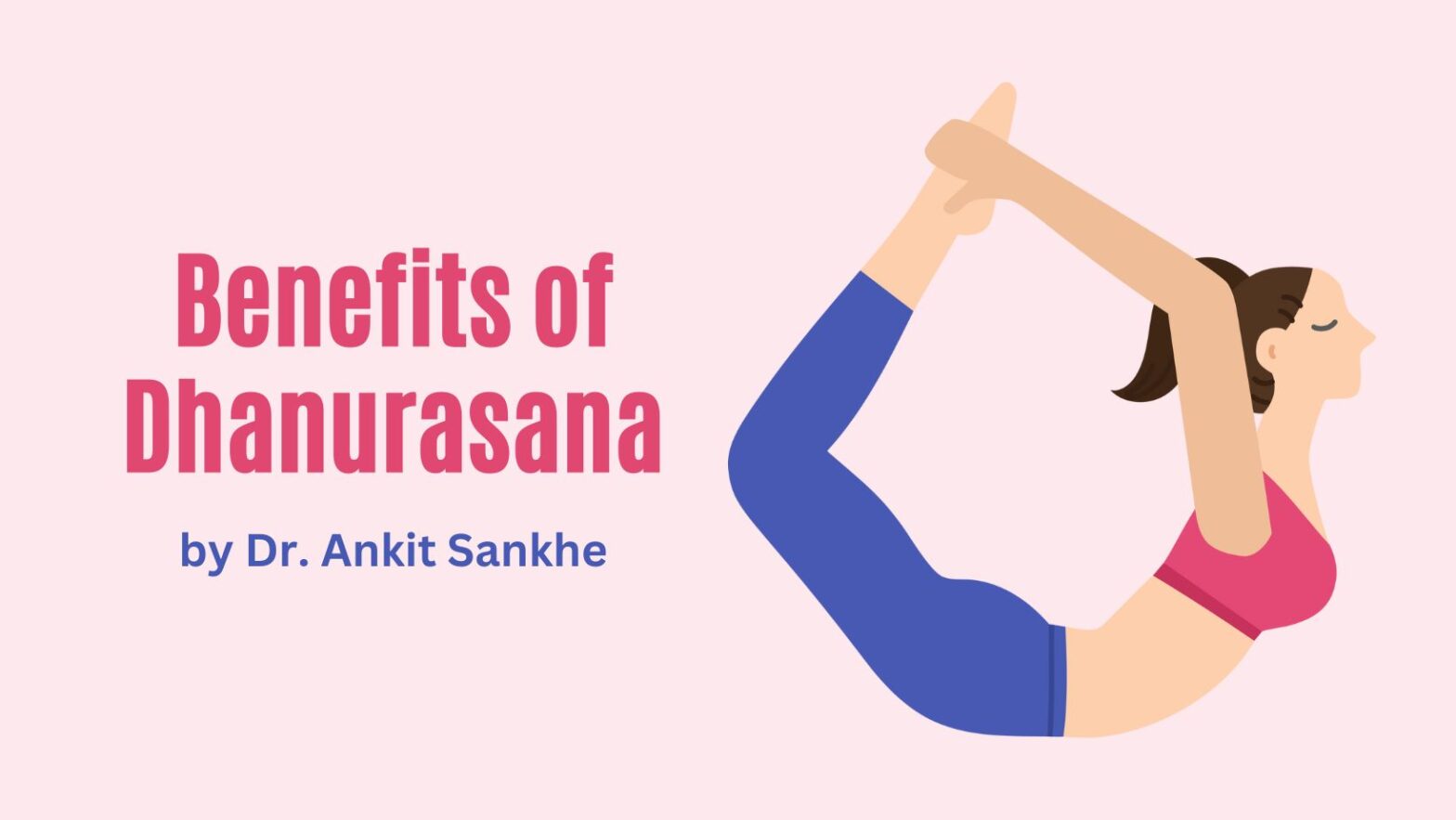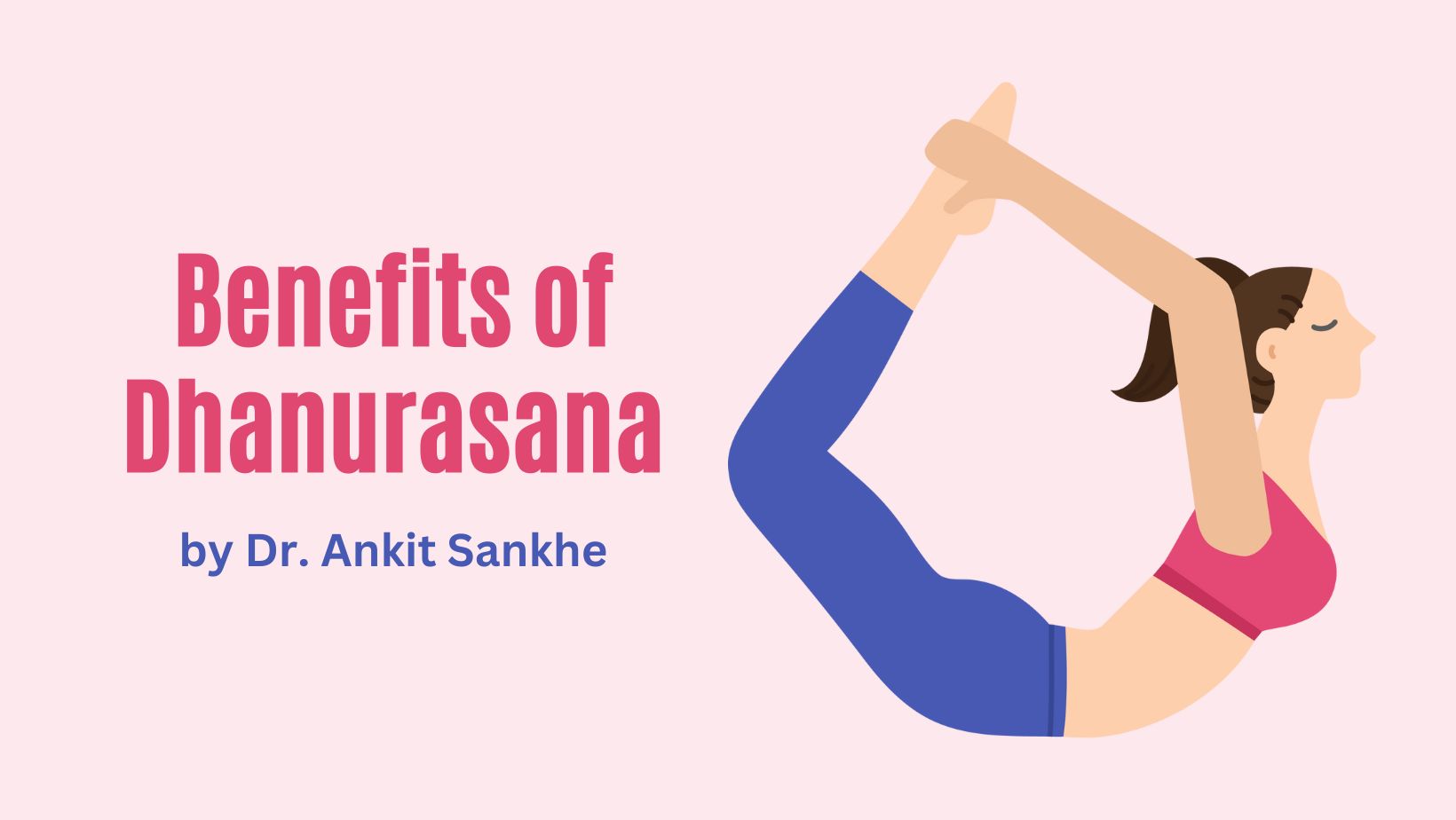Home » Blogs
Benefits of Dandasana (Staff Pose) and How to Do it By Dr. Ankit Sankhe
- By Ankit Sankhe
- May 10, 2023
- 9:01 am
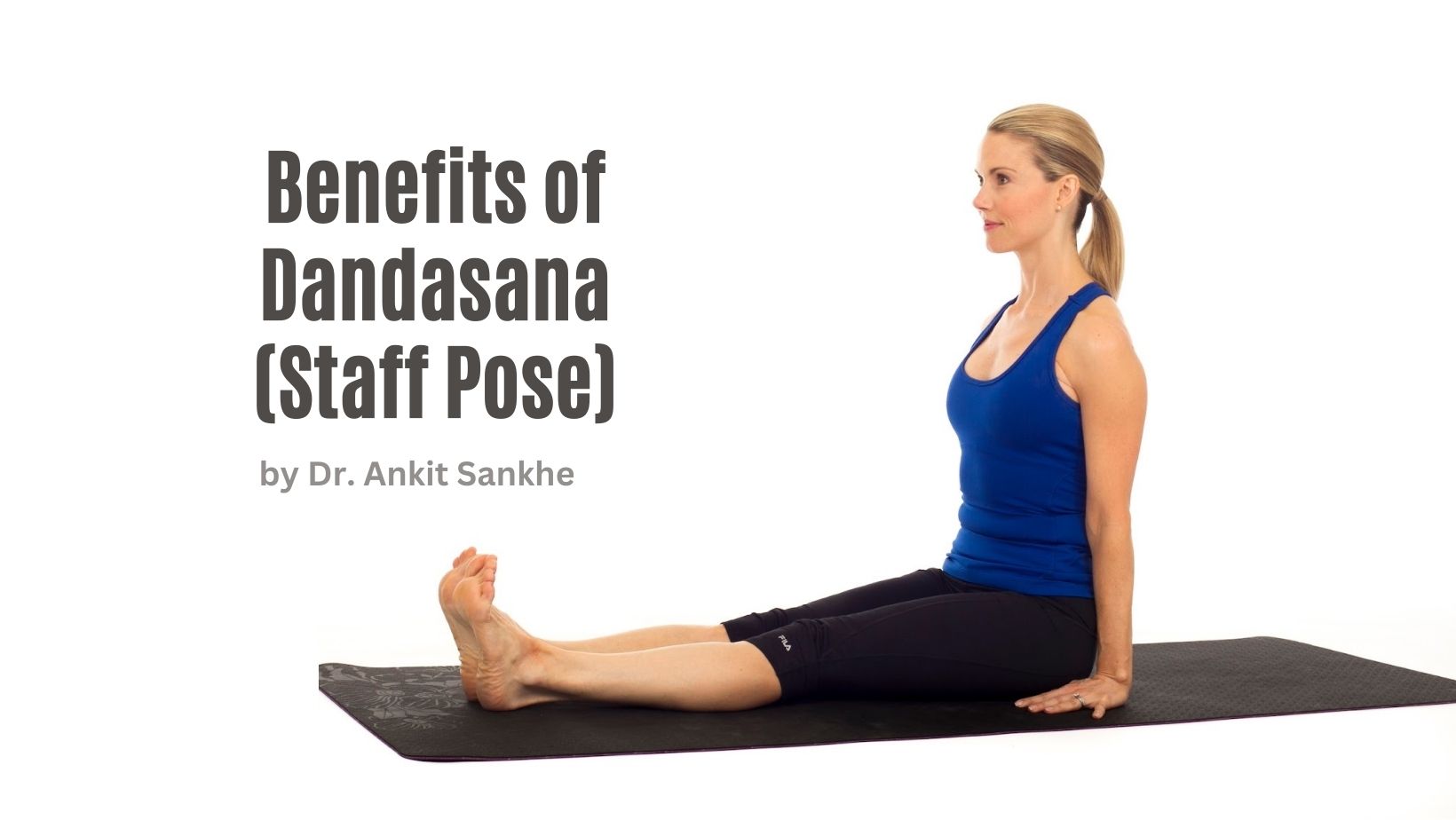
Introduction:
Yoga has become a multibillion-dollar industry. It is practiced by people from all age groups, including celebrities, bloggers, housewives, youngsters, and old-aged people. According to statistical studies, about sixteen million Americans practice yoga every year. Nowadays, several entrepreneurs have started the concept of ‘doga’ which involves the practice of yoga with their dogs. Yoga is about a mat, outfit, and centre for many people. Yoga has a deeper spiritual meaning which consists of asanas (postures) and pranayama (breathing technique) with numerous health benefits.1 Let us glance through the health benefits of the dandasana yoga pose.
What is Dandasana?
Asanas are practiced by sitting comfortably in one position for an extended period. Certain asanas may open the energy and psychic centres in the body. Asanas may help to control the mind, body, and energy. Dandasana is one such asana that may have several benefits for the body.2 ‘Danda’ means staff or stick, and ‘asana’ means pose. Hence, dandasana is also known as stick pose or staff pose. It is a seated pose, where the staff represents the straight and strong spinal column.3,5
How to Do it?
Dandasana can be practiced in the following way:
- Sit on the floor comfortably and stretch your legs in front of you. Keep your feet together.
- Draw your buttock flesh out to the sides.
- Feel slight pressure on the bones touching the ground while you seated. Balance your ankles and draw your thighs closer to the ground.
- Extend your heels, draw your kneecaps towards your pelvis, and continue breathing simultaneously.
- Lift your waist by sucking your ribs in and pulling your breastbone up.
- Sit the armpits above the hips and lift the waist by sucking the upper side and back ribs in and pulling the breastbone up.
- Extend the arms in the air until in line with the shoulders pulling away from the ears.
- Look in the front and loosen your jaw.
- Keep your shoulders straight back your shoulder blades down, relaxed and away from the skin.
- Keep your back straight, and do not allow your abdomen to sag.
You can do this for 20-30 seconds or 10-20 breath cycles.3
Do you know?
Some interesting facts about dandasana are:
- Dandasana is known as the mother of all seated poses, as it is a foundation pose that may be the basis of other poses.
- Dandasana is called a staff pose or stick pose because the spine represents the staff carried by swami danda, who are Indian renunciates.
Benefits of Dandasana:
Some of the potential health benefits of dandasana are:
1. Benefits of Dandasana for Fatigue and Balance:
Guner et al. conducted a study in 2014 to investigate the fatigue and balance of patients with multiple sclerosis using the Fatigue Severity Scale (FSS) and Berg Balance Scale (BBS). The result suggested that the yoga protocol which includes dandasana may help to balance and reduce fatigue due to its ability to strengthen the voluntary muscles and may control the nervous system.4 Further large-scale studies required to check the effect of dandasana on fatigue and balance.
2. Benefits of Dandasana for Regulating Blood Pressure:
A study conducted by Cowen et al. in 2004 showed that the practice of a yoga protocol that included dandasana might help to lower blood pressure.5 However, further large-scale studies are yet to be done to check the effect of dandasana on blood pressure. Therefore, you must consult your doctor in case of abnormal blood pressure. Do not self-medicate.
3. Benefits of Dandasana for Managing Stress:
Regular practice of yoga, including dandasana, may help to manage stress. It may improve awareness, mental state, emotional balance, and energy. In a study, stress was measured by the perceived stress scale, which suggested a reduction in stress levels.5 However, more research is needed to confirm if dandasana may help to manage stress. Therefore, you must consult your doctor if your mental well-being is hampered.
4. Benefits of Dandasana for Cancer:
Practicing yoga which includes dandasana may relieve breast cancer complications. Dandasana may reduce pain and increase the chances of survival of people previously diagnosed with breast cancer.6 However, more study is required to check if dandasana may benefit from cancer complications. You must consult your doctor if you experience discomfort after getting cured of cancer. You shall not rely on yoga and should take proper treatment.
5. Benefits of Dandasana for the Heart:
Regular practice of yoga, including dandasana, may be beneficial for cardiac arrhythmia (irregular heartbeat). A study conducted by Sharma et al. in 2021 showed that the practice of yoga might be beneficial to improve heart rate and may regulate blood pressure. .7 However, further studies are required to check if dandasana may benefit the heart. You must consult your doctor if you have any symptoms of heart disease.
6. Benefits of Dandasana for Improving Posture:
A study conducted by Guner et al. in 2014 showed that dandasana may help to improve posture. It may help in strengthening the back muscle and stretching the shoulder and the chest.4 However, further studies are required to check if dandasana may help to improve posture.
7. Benefits of Dandasana for Osteoarthritis:
A study conducted by Vaghela et al. in 2020 showed that regular yoga practice, including dandasana, may be beneficial for osteoarthritis. Yoga may improve the quality of life in osteoarthritis knee patients. It may reduce pain, improve knee mobility, and improve muscle strength.9 However, more studies are required to check if dandasana may benefit osteoarthritis. You must consult your doctor if you experience severe pain due to osteoarthritis.
Yoga practice may help in developing the mind and body. However, it is not an alternative to modern medicine. Therefore, you must not rely on yoga alone to treat any condition. Instead, please consult a qualified doctor who will be able to assess your condition correctly and advise accordingly. Moreover, it is necessary to practice and learn yoga under the supervision of a trained yoga teacher to avoid any injuries.
Risks of Dandasana
The risks associated with dandasana are as follows:
- You must be cautious if you have injuries in your wrist before performing dandasana
- You must restrain yourself from doing dandasana if you have injuries in your lower back.10
Conclusion
Dandasana is an asana that may have benefits for the body. ‘Danda’ means staff or stick, and ‘asana’ means pose. Hence, dandasana is also known as stick pose or staff pose. It is a seated pose, where the staff represents the straight and strong spinal column. Dandasana may have potential health benefits which may help to reduce fatigue and balance the body. It may help to regulate blood pressure and manage stress. Dandasana may act against cancer, spondylitis, and osteoarthritis and improve the function of the heart. However, further studies are required to check if dandasana may benefit the mentioned diseases. You must consult your doctor if you have health issues and practice dandasana under the proper trainer.
Frequently Asked Questions
References:
- White DG. Yoga, brief history of an idea. Yoga in practice. 2012;5(1):1-23. Available from: http://whitelotus.m4interactive.com/sites/default/files/articles/history-and-evolution-of-yoga-by-david-g-white-phd_0.pdf
- Saraswati SS, Hiti JK. Asana pranayama mudra bandha. Bihar, India: Yoga Publications Trust; 1996. Available from: https://thelonerider.com/pdf/asana_pranayama_mudra_bandha.pdf
- Dandasana – staff pose [Internet]. Vajrasati. [cited 2022Oct6]. Available from: https://www.vajrasatiyoga.co.uk/dandasana-staff-pose
- Guner S, Inanici F. Yoga therapy and ambulatory multiple sclerosis assessment of gait analysis parameters, fatigue and balance. Journal of bodywork and movement therapies. 2015 Jan 1;19(1):72-81. Available from: https://www.sciencedirect.com/science/article/pii/S1360859214000564
- Cowen VS, Adams TB. Physical and perceptual benefits of yoga asana practice: results of a pilot study. Journal of Bodywork and Movement Therapies. 2005 Jul 1;9(3):211-9. Available from: https://www.sciencedirect.com/science/article/pii/S1360859204000610
- Saraswathi V, Latha S, Niraimathi K, Vidhubala E. Managing lymphedema, increasing range of motion, and quality of life through yoga therapy among breast cancer survivors: A systematic review. International journal of yoga. 2021 Jan;14(1):3. Available from: https://www.ncbi.nlm.nih.gov/pmc/articles/PMC8023442/
- Sharma G, Mooventhan A, Naik G, Nivethitha L. A review on the role of yoga in the management of patients with cardiac arrhythmias. International Journal of Yoga. 2021 Jan;14(1):26. Available from: https://www.ncbi.nlm.nih.gov/pmc/articles/PMC8023436/
- Singh J, Metri K, Tekur P, Mohanty S, Jha M, Singh A, Raghuram N. Designing, validation, and the feasibility of a yoga module for patients with ankylosing spondylitis. Journal of Ayurveda and Integrative Medicine. 2022 Jan 1;13(1):100479. Available from: https://www.sciencedirect.com/science/article/pii/S0975947621001273
- Vaghela N, Mishra D, Patel J, Dani V. Promoting health and quality of life of patients with osteoarthritis of the knee joint through non-pharmacological treatment strategies: A randomized controlled trial. Journal of Education and Health Promotion. 2020;9. Available from: https://www.ncbi.nlm.nih.gov/pmc/articles/PMC7377148/
- Dandasana [Internet]. The BioMedical Institute of Yoga & Meditation. 2022 [cited 2022Oct6]. Available from: https://biyome.com.au/yoga/asana-manual/dandasana/
Disclaimer: The information included at this site is for educational purposes only and is not intended to be a substitute for medical treatment by a healthcare professional. Because of unique individual needs, the reader should consult their physician to determine the appropriateness of the information for the reader’s situation
